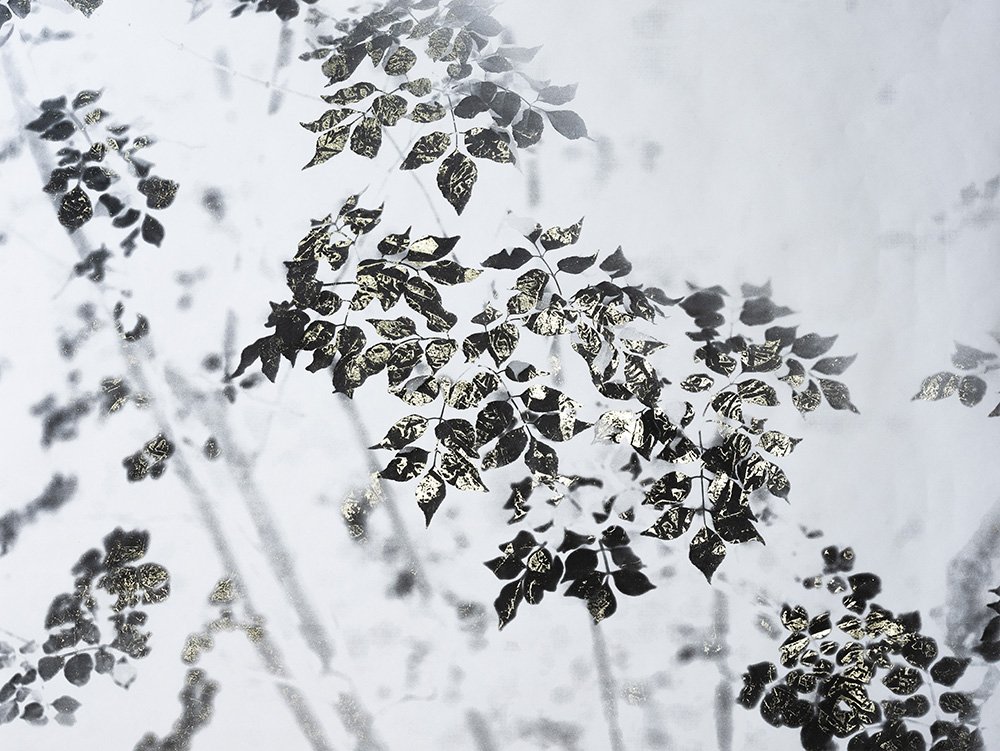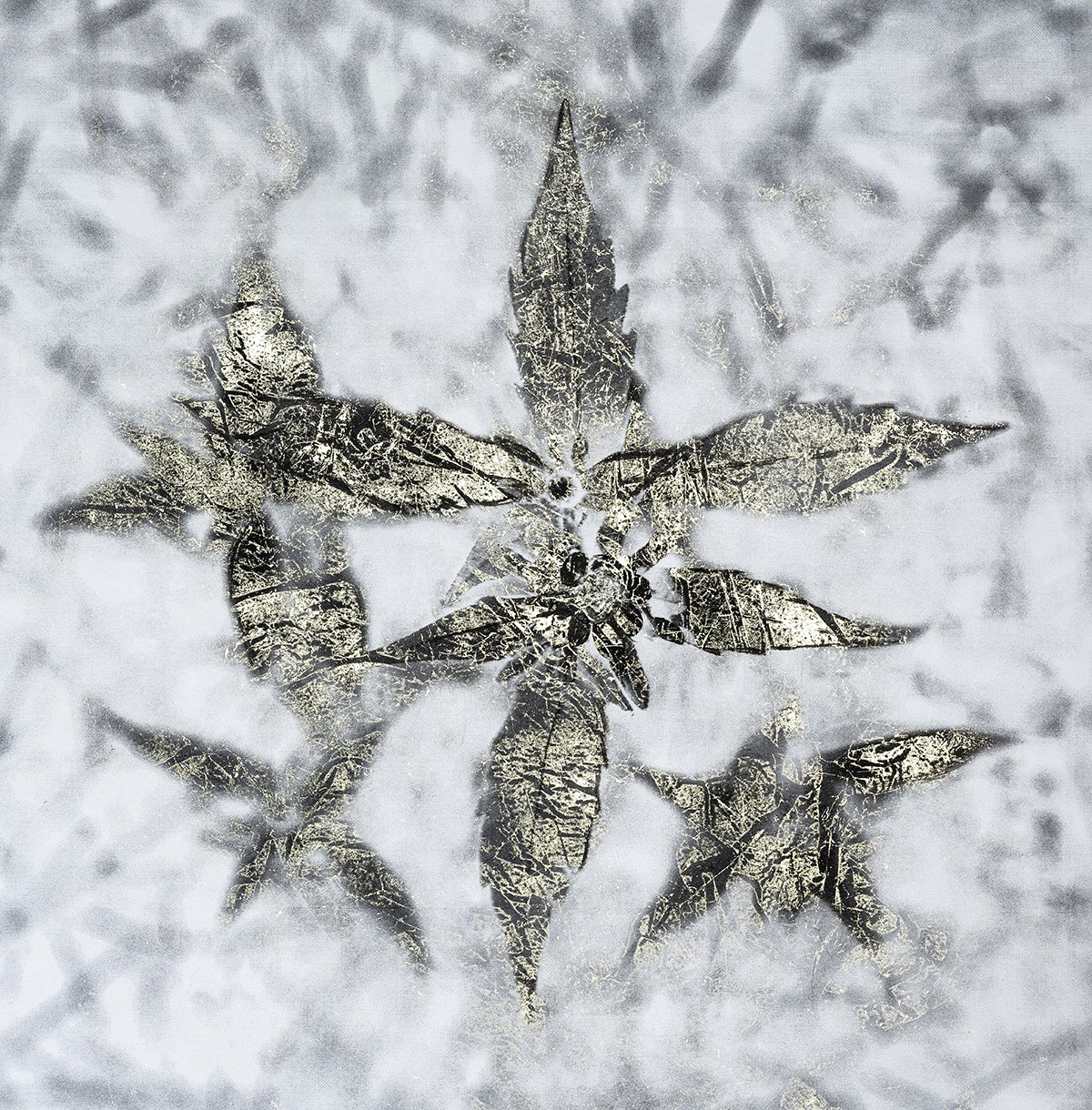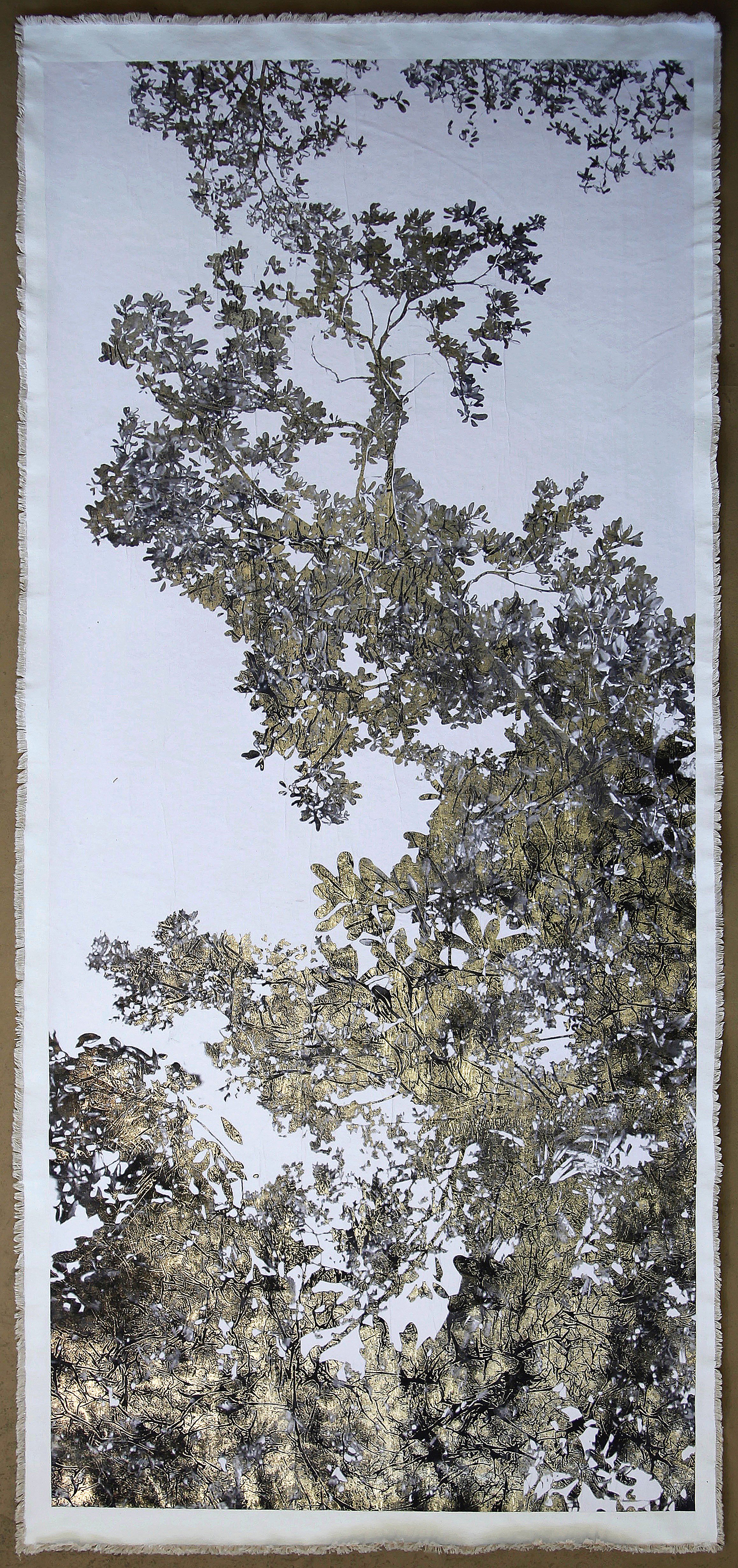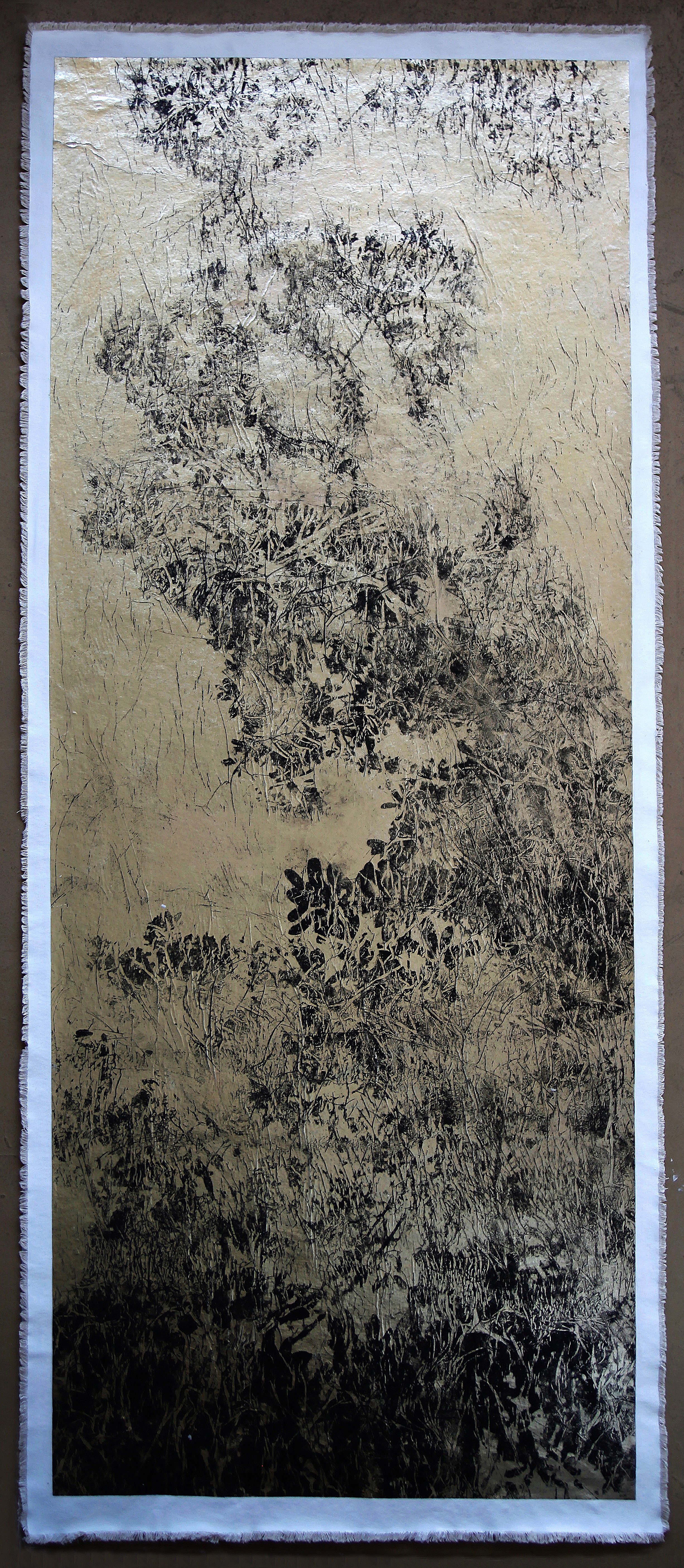“Natural Abstractions: Flora on the Edge” Project
“Jungle Canopy”, Mixed media, 40” x 51”, 2017, source photo shot in Humboldt National Park in Cuba
Project Purpose: To raise public awareness of endangered plant species and highlight their vulnerability to development and climate change
Exhibition Description:
The “Natural Abstractions: Flora on the Edge” exhibition utilizes various visual artistic mediums to directly communicate the beauty and fragility of nature and highlight the existential threats to biodiversity and the environment that we are currently facing. The exhibition is a combination of physical artworks, videos, a custom soundscape, and an Augmented Reality experience that can be viewed on a smart phone.
The physical artworks in the exhibition will be created using a mixed media technique that artist Bill Claps has developed to create artworks of plant specimens that appear to be fossilized versions of plants that are not yet extinct. This creates an abstract and imaginary fossilized record of something that’s currently alive, but that very quickly could become just a memory: a metaphor for the fragility of nature. Claps has traveled to diverse ecosystems in North America, Asia, and the Caribbean to photograph these endangered plants, which he uses as source material for his artworks.
Videos in the exhibition will include footage of the artist documenting endangered plants in various ecosystems around the world. An Augmented Reality artwork will add an interactive element to the exhibition, and a custom soundscape will provide an evocative ambiance.
Project Collaborators: The project is a collaboration with botanists at the Smithsonian National Museum of Natural History, The Arnold Arboretum of Harvard University, the University of British Columbia, and the NY Botanical Garden.
Selected Artworks in the Exhibition
Expedition to Humboldt Forest, Cuba 2017
Video of expedition to photograph endemic and endangered species in Alejandro De Humboldt National Park, one of the most biologically diverse tropical island sites on earth and a UNESCO natural world heritage site.
























